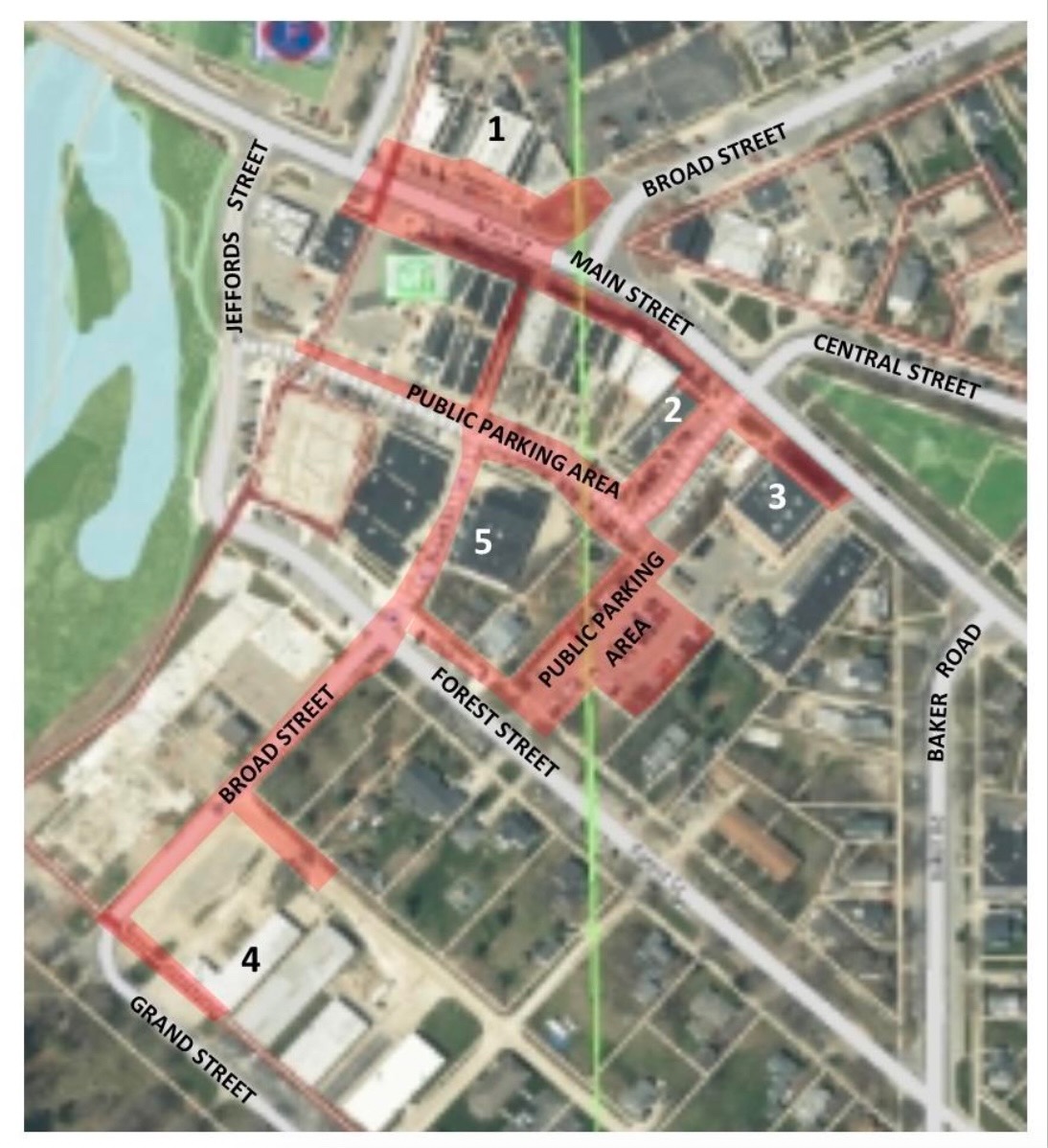Photo: Saline Depot 19th Century. Photo courtesy of SAHS
The year was 1870. Saline had become an incorporated village just four years earlier. This was the year the first train arrived in Saline, and it was a big deal. Back in the 19th century, trains revolutionized travel and commerce by providing nationwide public transportation, an economic boon for farmers who could now ship produce and livestock to larger markets.
Saline’s First Train: A Historic Moment
Saline’s History and Depot Museum (SHDM) pays tribute to the railroad service and that special day in 1870. Join me as I visit the museum to discuss that day and view the exhibits.
Upon entering, the first person you may see is Bob Lane. He serves on the Board of Directors and volunteers for the Saline Area Historical Society (SAHS). Bob welcomes you and introduces himself with a smile, saying, “I have had a love history since I was a child. I have a degree in art history from the University of Michigan.”

Starting with a brief history of the railroad in southeast Michigan, Bob begins with, “At that time, Saline was the only town in Washtenaw County that did not have a railroad service. All of the other good-sized towns, including Chelsea, Dexter, Manchester, and Ypsilanti, had train service. When this railroad came here, it was like – wow. Passenger service could come here and residents would be able to ship their goods out. The bricks out in front at the entrance of the depot were the passenger section. People would come in and get a horse and buggy to take them downtown.”

The Arrival of the Train: July 4, 1870
The tour of the museum begins with a painting (by Linda Klenczar) that visitors see when they first walk in, depicting that day when the first train arrived. You will see American flags for the holiday as the train arrived on July 4, an arch decorated with flowers heralding the train’s arrival, a large audience dressed in their Sunday best, and the depot, water tower, and train as they all would have appeared then. Also included in the painting is Saline’s famous photographer Lucretia Gillett. At that time, she had run Saline’s only successful photographic studio for nearly thirty years. She is shown taking a photograph – although there is no known photograph taken of this historical event.

Saline Celebrates the Train’s Arrival
Bob goes on to describe the festivities of the day. “The train came from Ypsilanti and could carry 800 people. The train would go back and forth from Ypsilanti to Saline and brought about 7,000 people that day. After the train’s arrival, everyone all walked down Saline Ann Arbor Road to Chicago Road – now named U.S. 12. From there, they all went to what is today the cemetery.”
Bob says about the cemetery property, “Orange Risdon – considered the founder of Saline – owned that property, and his house was on the hill. When people arrived that day there was a big feast to celebrate the coming of the train. The ladies of Saline set it all up and made a big meal.” Years later, the house was moved to Henry Street, and the remaining property became Saline’s Oakwood Cemetery.

The Early Railroads of Saline
Bob continues with the history of the Saline railroads. “The first railroad line was called the Detroit – Hillsdale – Indiana Railroad (DHI), on the sign out front. And that was the original railroad. Then Lake Shore Michigan Southern (LSMS) came in, and they ran the railroad, but they did not own the track or the depot – that was still owned by the DHI Railroad. LSMS was one of the largest railroads in the United States and was owned by Cornelius Vanderbilt.”
Business Booms at the Depot
Saline residents had good reason to welcome the train’s arrival, as activity and commerce were indeed brisk. In fact, up to six steam trains were scheduled a day and moved 20 to 30 miles per hour. This paragraph called “Business at the Depot” is from the Saline Observer on November 18, 1880:
Things looked lively at the depot this morning. Messrs. La Rue & Kanouse were taking in and getting ready to ship three car loads of live hogs, and Nate Bordine, a car load or two of live poultry. There was a constant line of teams going to and from the depot, and at one time we counted over thirty wagons loaded with hogs, turkeys, chickens, etc., their owners all anxious to be relieved of their load and pocket their cash. Station Agent Hall informed us also that grain had been coming in during the week at the rate of nearly 1,000 bushels per day. Who says Saline is not a business place, eh?

Notable Figures and 19th-Century Saline
Bob continued the tour as we walked through some of the other exhibits in the museum, including famous Saline residents and visitors such Buffalo Bill Cody and Emily Dickinson to name a few, as well as a display of how Saline looked in the 19th century.
After the tour concluded indoors, we stepped outside to view the caboose on the tracks by the museum. This replica of a 19th-century caboose was built around 1942, and because of the steel shortage during the war, it is made of wood. Cabooses were basically where the conductor had their office. Typically, there would be a typewriter, an adding machine, cots for beds, and a tower to keep watch of the cars to ensure no “bums” boarded.

Saline’s Caboose: A Restored Relic
Norman Harden, a railroad aficionado, had restored the caboose in his backyard. When he passed away, his wife didn’t know what to do with it, and the caboose was ultimately donated to the SAHS. Bob notes, “Yellow was the color of LSMS. We put it on the caboose.”
Preserving History: The Museum Today
It has been 154 years since the opening of Saline’s train depot. The last passenger train ran in 1938, and freight service ended in 1961. Many of the train tracks have been torn up, with some converted to walking/bike trails, such as the Leslee Niethammer Memorial Library Trail, a paved path that traverses through Brecon Park and the Saline Library woods. In 1994, the museum was placed on the National Register of Historic Places.

Celebrate Independence Day at the Depot
Every July 4th, the depot museum celebrates the arrival of the train with the annual Wayne Clements Memorial Independence Day Event. Wayne Clements was a past president of the SAHS and spearheaded the preservation of the museum. Festivities that day include a tour of the depot and grounds, a ride on the train tracks in a velocipede, and children’s games on the lawn.
I would like to thank Bob Lane and the Saline Area Historical Society for preserving Saline’s history and inviting readers to visit Saline’s History and Depot Museum.

For more information
The Saline History and Depot Museum is open Saturdays year-round. Visitors will see a station agent’s room, freight room, furnished caboose, livery barn, and windmill. Regular hours are 11:00 am-3:00 pm or by appointment. Groups larger than ten require a reservation. Please contact them at 734-944-0442. And when visiting, don’t forget to bring your National Parks Passport book and get a stamp.
For more information on the Saline Area Historical Society visit www.salinehistory.org.
For information on Lucretia Gillett, Saline’s famous photographer, visit https://quod.lib.umich.edu/s/sdlphotos/x-157/shs00187
For more Saline history check out the Historical Marker Database of Saline, at www.hmdb.org/m.asp?m=236176 .
For information on how railroads helped create time zones, visit www.bbc.co.uk/travel/article/20241115-how-railroads-inspired-the-creation-of-time-zones
Looking for a good read on railroads in Michigan? Try Willis Dunbar’s book “All Aboard: A History of Railroads in Michigan.”






 8123 Main St Suite 200 Dexter, MI 48130
8123 Main St Suite 200 Dexter, MI 48130


